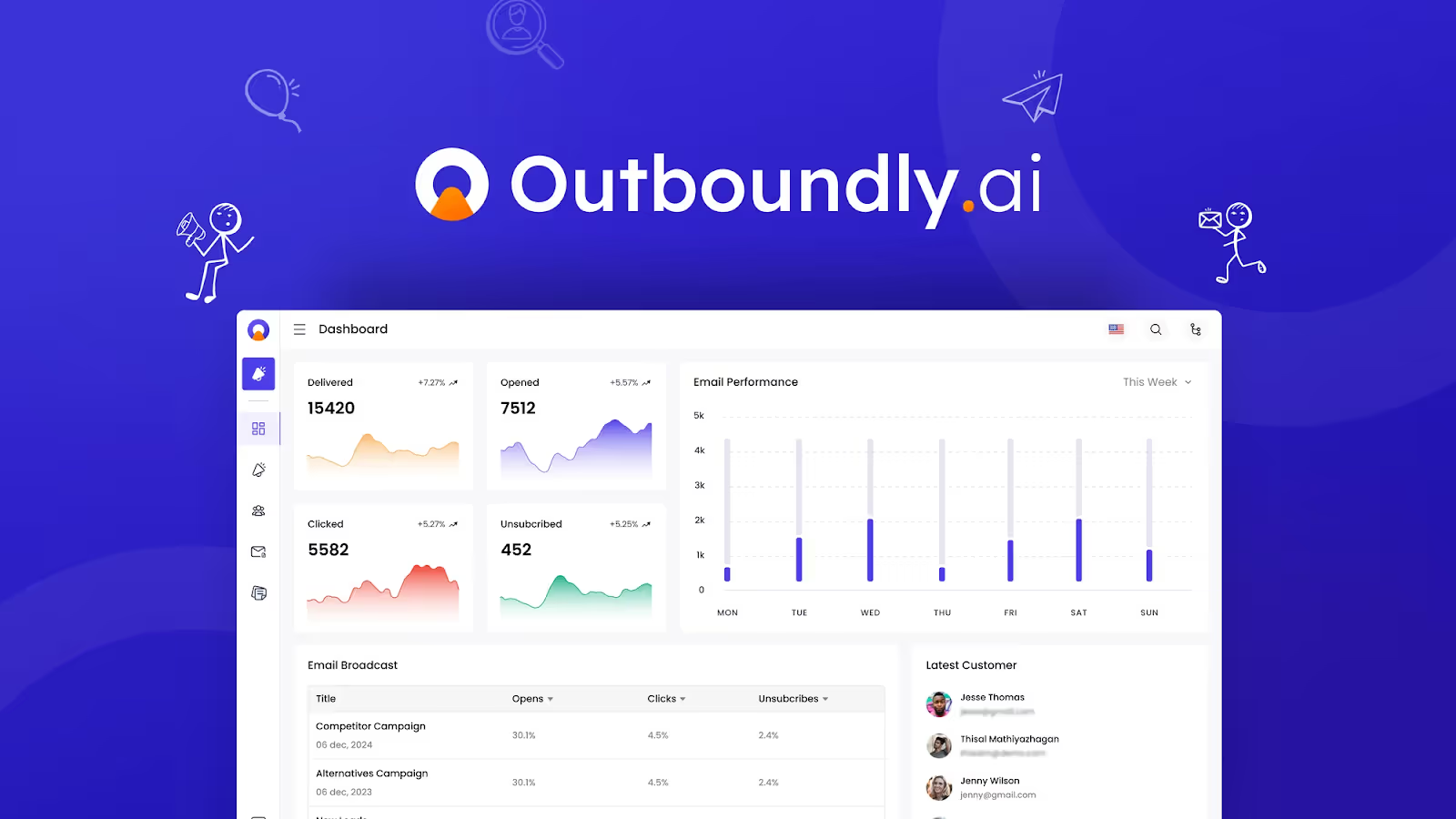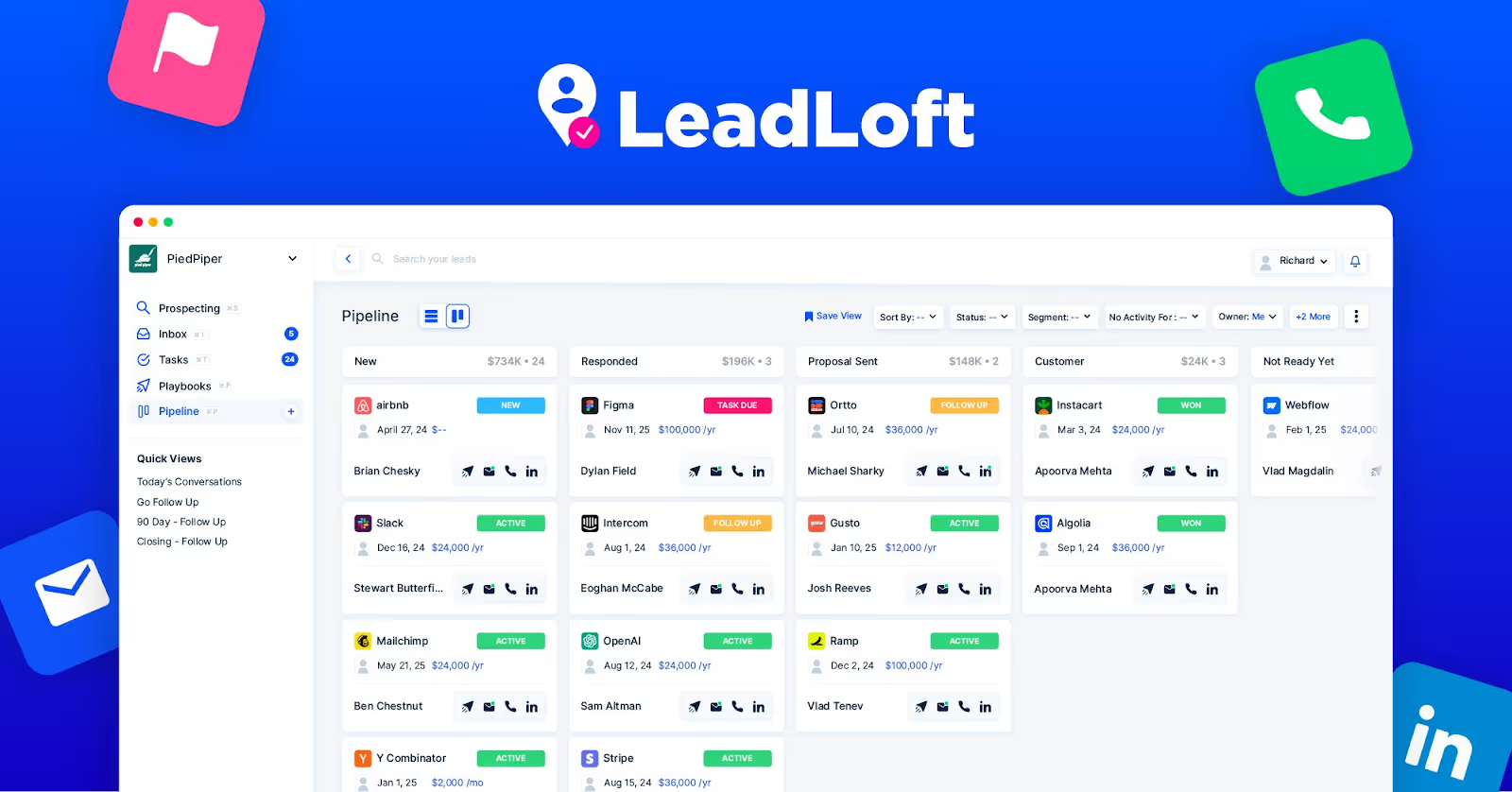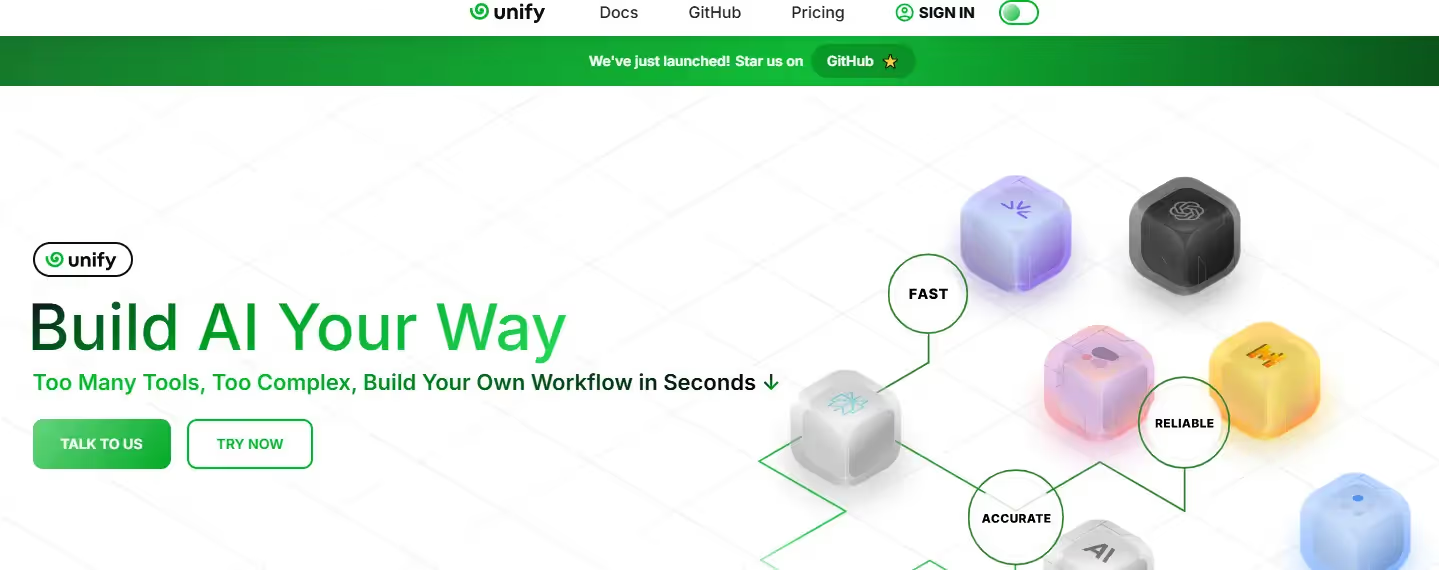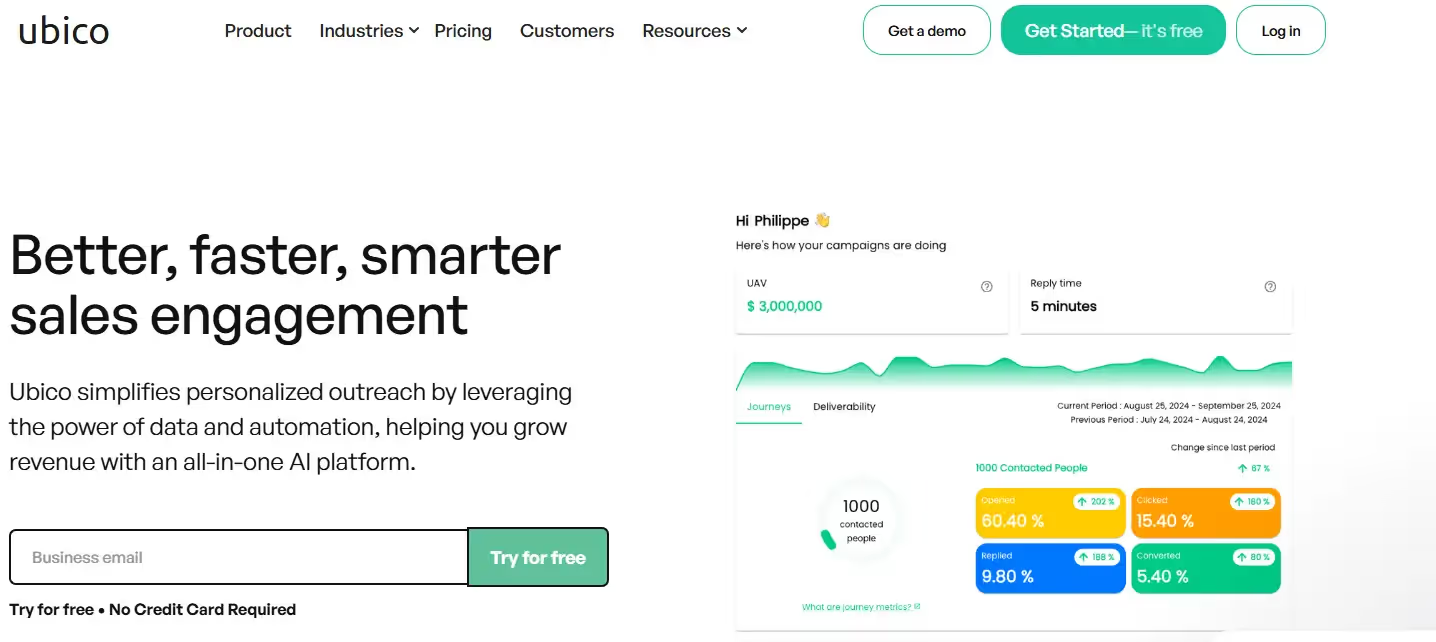The Best SDRx Alternatives for 2025: Performance & ROI
.avif)
We tested these AI SDRs.
Only one actually booked the meetings.
Why we ran this teardown
The AI SDR market is heating up. Everyone from startups to incumbents is promising the same vision: automated list building, hyper-personalized outreach, and self-optimizing follow-ups.
SDRx, launched by Klenty, is one of the loudest voices. Their pitch? A 24/7 AI agent that trains itself on your business, crafts 1:1 emails, and scales outbound like never before. It’s compelling. And on paper, SDRx checks a lot of boxes: prospect research, deliverability infrastructure, adaptive messaging.
But most platforms that “automate outbound” still lean heavily on humans to fill the gaps: cleaning data, managing cadences, handling replies, or manually scheduling meetings. So we tested SDRx and five other alternatives in the wild, including Outboundly.ai, LeadLoft, Unify, and Ubico—alongside 11x’s own AI SDR, Alice. We weren’t looking for a dashboard. We were looking for an actual teammate.
Platforms Tested
- 11x (Alice): Autonomous digital worker that executes outbound end-to-end across all channels
- SDRx: AI SDR that researches, personalizes, and adapts outreach using CRM + LinkedIn data
- Outboundly.ai: AI sequencing tool with LinkedIn activity-based personalization
- LeadLoft: All-in-one CRM + sales automation tool for fast-scaling teams
- Unify: Intent dashboard and email workflows for outbound teams
- Ubico: Email and LinkedIn automation with AI scoring and lead-level personalization
What We Measured
- Lever: Real-world impact
- Speed-to-engage: Can the platform act instantly on inbound/demo intent or signal triggers?
- Personalization depth: Is it just mail merge, or is it trained on CRM, LinkedIn, web data, etc.?
- Execution autonomy: Can it run without workflows, playbooks, or constant rep oversight?
- Multichannel reach: Does it natively support email, LinkedIn, voice, SMS, and WhatsApp?
- Setup friction: How quickly can a team activate it—hours, days, or weeks?
- CRM-native behavior: Can it write to and enrich CRM records in real time?
- Deliverability readiness: Does it handle domain warming, inbox rotation, and compliance?
- Pipeline lift: Are real meetings getting booked, not just emails sent?
Alice didn’t assist. She executed.
Where others orchestrated workflows, Alice (11x) deployed as a teammate. She didn’t just send messages; she identified high-intent prospects, personalized sequences using 20+ data signals, handled replies, and booked meetings autonomously.
A real week with Alice:
Day 0 – Setup
14:00 – CSV uploaded (15k rows)
14:02 – Alice deduplicates against HubSpot, enriches with job titles, funding, LinkedIn activity
14:04 – DNS checks, warm-up begins
14:06 – First outbound batch goes live across email, LinkedIn, WhatsApp—without building a single workflow
Day 1 – Live Outreach + Booking
11:12 – Alice detects title change + new job on LinkedIn
11:13 – Rewrite triggered mid-sequence
11:14 – Reply received. Objection handled.
11:15 – Calendar link sent. CRM updated. Slack alert fires.
Day 2 – Follow-through
Alice detects a drop in open rate. Shifts channel to SMS. Pulls a new stat from a case study.
Books a meeting with a previously cold prospect, completely autonomously.
Where SDRx shows promise, and where it still trails 11x
SDRx gets the fundamentals right. It ingests CRM + LinkedIn data, researches 150 + public sources, warms domains, and (thanks to a new AI Calling Agent) can even dial inbound leads and route meetings automatically. The platform also writes every activity back to HubSpot, Salesforce, Zoho, and Pipedrive.
But when we pressure-tested it against 11x, three critical gaps emerged:
- Channel coverage: Outbound engine is limited to email + LinkedIn; the call bot adds phone/SMS only for missed connects—no native WhatsApp or mid-sequence channel pivoting. Email, LinkedIn, voice, SMS, WhatsApp, with automatic channel-switching when engagement drops.
- Reply & objection handling: Quality-control reviews copy before send, but there’s no claim of parsing replies or re-writing in real time. Reps still jump in to steer the conversation. Alice interprets every response, handles objections, rewrites on the fly, and books meetings without human hand-offs.
- Revenue-team automation: Logs activities to CRM, yet there’s no evidence of instant Slack/Teams alerts, bi-directional field updates, or automatic pipeline progression. Real-time CRM sync, internal alerts, and stage advancement the moment a meeting is secured.
SDRx is a polished sequencer paired with a separate call bot—great assistance, but still short of a true 24/7 closer. Alice unifies every touchpoint in one autonomous digital worker, eliminating manual gaps and turning signals into scheduled meetings all on her own.
Runner-up reviews (strengths & gaps)
2. Outboundly.ai

Strengths
- Strong LinkedIn personalization engine
- Real-time activity monitoring for tailored messaging
- Solid HubSpot integration
Gaps
- Limited outside of LinkedIn + email channels
- Learning curve for users new to outbound sequencing
- Doesn’t handle reply flows or objections
- No support for custom routing logic or CRM sync beyond HubSpot
3. LeadLoft

Strengths
- Built-in CRM for teams without HubSpot/Salesforce
- Good UI for sequencing and team collaboration
- Full sales funnel visibility
Gaps
- Prospect data often needs manual cleanup
- No integration with deeper signal sources (e.g., LinkedIn, job changes)
- Lacks real-time adaptability—no smart reply logic or meeting routing
4. Unify

Strengths
- Great for organizing dashboards and outbound playbooks
- Smooth workflows for small sales teams
- Clean prospect tracking
Gaps
- No AI objection handling or meeting booking
- Messaging templates feel rigid and dated
- Doesn’t run autonomously, relies on rep engagement
5. Ubico

Strengths
- Lean AI engine focused on lead quality
- Integrates with CRMs and scores leads based on interest
- Good for SMB teams starting outbound
Gaps
- Smaller data coverage
- Manual setup required for the first campaigns
- No multichannel support
- SDRs are still needed for follow-up and scheduling
Why 11x (Alice) is different—and better
While others help SDRs work faster, Alice replaces the role entirely. No approval loops. No playbook configs. No back-and-forth in Slack to figure out what to say or when to say it.
Alice executes autonomously from signal to scheduled meeting, and improves with every conversation.
- Zero setup drag – Just upload your list or connect your CRM. She’s live in minutes.
- Full-cycle execution – Alice researches, writes, personalizes, follows up, handles replies, and books.
- Multichannel-native – Email, LinkedIn, SMS, WhatsApp, and voice calls—day one.
- CRM-native – Alice enriches leads, triggers follow-ups, and logs everything to Salesforce and HubSpot in real time.
- Outcome-based pricing – No seats. No usage limits. Just meetings that show up.
Stop configuring workflows. Start booking meetings.
Platforms like SDRx, Outboundly, and Ubico are solid choices if you want to speed up manual outreach.
But if you need an AI SDR that can act—detect signals, handle objections, and book qualified meetings—you don’t need a tool. You need Alice.
With 11x, you get:
- +30% more meetings per AE
- 105+ languages supported
- <20 sec average inbound response
- $100M+ in revenue generated for customers
All without writing a single cadence, touching a sequence builder, or approving a single email draft.

Want to test it yourself?
Upload your list. Give Alice a product and a persona. She’ll build pipeline before Day 2 even starts.


.png)
.png)
.png)
.png)
.png)
